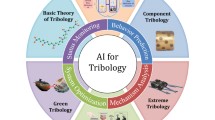Abstract
This paper presents a novel workflow for the design, robotic fabrication and assembly of lightweight timber structures based on a reciprocal frame structural principle. The described method expands existing research in the field by demonstrating a unified mesh-based workflow throughout the form-finding, manufacturing and assembly phases, as well as applications of augmented reality (AR) at several process stages. A case study in the design and construction of a prototypical self-supporting lightweight timber structure is presented. The process illustrates the dynamic transfer of data between various design, analysis and manufacturing simulation environments through the use of a common lightweight skeletal model and a just-in-time approach to manufacturing geometry creation. As such, the method serves as an example of Fabrication Information Modelling (FIM), an approach characterized by the synthesis of multiscale, interdisciplinary geometric representations, material properties, and fabrication parameters.
















Similar content being viewed by others
Code availability
The Axis Robot Control Framework (RCFs is accessible to the public at github.com/AxisArch/Axis.git as well as axisarch.tech/framework. We currently support the online and offline control of ABB and KUKA robots as well as experimental features for UR. We encourage other researchers to leave feedback or contribute to the project. Sample files for the geometry generation and robot control setup are available upon request.
References
Adriaenssens S, Block P, Veenendaal D, Williams C (2014) Shell Structures for Architecture. Form Find Opt. https://doi.org/10.4324/9781315849270
Axis Robot Control Framework. Retrieved from https://axisarch.tech/framework.
Bhooshan V, Reeves D, Bhooshan S, Block P (2018) MayaVault—a mesh modelling environment for discrete funicular structures. Nexus Netw J 20. https://doi.org/10.1007/s00004-018-0402-z
Bhooshan S (2017a) Combining computer-aided geometry design and building information modelling, AD Architectural. Design 87(3):82–89
Bhooshan S (2017b) Collaborative design: combining computer-aided geometry design and building information modelling. Architectural Des 87:82–89. https://doi.org/10.1002/ad.2177
Block P (2009) Thrust network analysis: exploring three-dimensional equilibrium, 2009.
Bletzinger KU, Ramm E (2001) Structural optimization and form finding of light weight structures. Comput Struct 79:2053–2062. https://doi.org/10.1016/S0045-7949(01)00052-9
Casucci T, Hughes R, Pedersen J, Reeves D, Bhooshan V, Bhooshan S (2019) Mesh-based design to fabrication workflows for funicular structures: a case study in Impact: Design With All Senses—Proceedings of the Design Modelling Symposium Berlin 2019, 2019.
Day AS (1965) An introduction to dynamic relaxation. The Engineer 219:218–221
Douthe C, Baverel O (2009) Design of nexorades or reciprocal frame systems with the dynamic relaxation method. Comput Struct 87:1296–1307. https://doi.org/10.1016/j.compstruc.2009.06.011
Duro-Royo, J. & Oxman, N. (2015). Towards fabrication information modeling (FIM): four case models to derive designs informed by multi-scale trans-disciplinary data. MRS Proceedings. 1800. https://doi.org/10.1557/opl.2015.647
Elefront. 2019. Retrieved from https://www.food4rhino.com/app/elefront
Jiang C, Tang C, Tomičí M, Wallner J, Pottmann H (2015) Interactive Modeling of Architectural Freeform Structures: Combining Geometry with Fabrication and Statics. In: Block P, Knippers J, Mitra NJ, Wang W (eds) Advances in Architectural Geometry 2014, Springer, Switzerland, pp 95–108Allen, J. S. 1999. “A Short History of ‘Lamella’ Roof Construction.” In Transactions of the Newcomen Society 71 (1), pp. 1–29.
Jonas K, Penn A, Shepherd P (2014) Designing with discrete geometry. https://doi.org/10.13140/RG.2.1.1917.5761.
Johnson D (1974) Fast algorithms for bin packing. J Comput Syst Sci 8:272–314. https://doi.org/10.1016/S0022-0000(74)80026-7
Lahmy, M., & Larsen, N. M. (2015). Timber curtain: designing with material capabilities. making research researching making, Aarhus, Denmark.
Mesnil R, Douthe C, Baverel O, Gobin T (2018) Form finding of nexorades using the translations method. Auto Construction 95:142–154. https://doi.org/10.1016/j.autcon.2018.08.010
Mesnil R, Douthe C, Gobin T, Baverel O (2018) Form finding and design of a timber shell-nexorade hybrid.
Miller N, Stasiuk D (2017) “A novel mesh-based workflow for complex geometry in BIM”, in disciplines and disruption—Proceedings catalog of the 37th annual conference of the association for computer aided design in architecture. ACADIA 2017:2017
Nahmad Vazquez A, Bhooshan S, Sondergaard A, Inamura C, El-Sayed M, Zabel J (2014) Design, analysis and fabrication of expressive, efficient shell structures: a prototype exploring synergy between architecture, engineering and manufacture
Popovic O (1996) Reciprocal frame structures.
Reddy J (2006) an introduction to finite element method. https://doi.org/10.1115/1.3265687
Rippmann M (2016) Funicular shell design—geometric approaches to form finding and fabrication of discrete funicular structures, ETH, 2016.
Shepherd P, Richens P (2010) Subdivision surface modelling for architecture. 1206–1217. In: Paper presented at international association for shell and spatial structures (IASS) symposium 2009, Valencia, Spain.
Spatial timber assemblies
Swatch Omega, Shigeru Ban Architects, www.shigerubanarchitects.com/, last accessed 2020/02/02.
Tij Bird Observatory, Geometria Architecture, http://www.geometria.fi/, last accessed 2020/02/02.
Tamke, M., Rüber, J., Jungjohann, H. & Thomsen, M. (2010). 3. Lamella Flock. https://doi.org/10.1515/9783990433713-004.
Acknowledgements
The authors would like to thank Aarhus School of Architecture and Paramateria for their invitations to teach workshops as part of their educational programs, through which the prototype was made possible, as well as HNE Eberswalde and Ligas Berlin for their generous support in hosting and financing the prototype construction. Additionally, we would like to thank Tassilo Goldmann and Tim Peters for their material knowledge and assistance in production.
Author information
Authors and Affiliations
Corresponding author
Additional information
Publisher's Note
Springer Nature remains neutral with regard to jurisdictional claims in published maps and institutional affiliations.
Rights and permissions
About this article
Cite this article
Hughes, R., Osterlund, T. & Larsen, N.M. Integrated design-for-manufacturing and AR-aided-assembly workflows for lightweight reciprocal frame timber structures. Constr Robot 5, 147–157 (2021). https://doi.org/10.1007/s41693-020-00048-3
Received:
Accepted:
Published:
Issue Date:
DOI: https://doi.org/10.1007/s41693-020-00048-3




